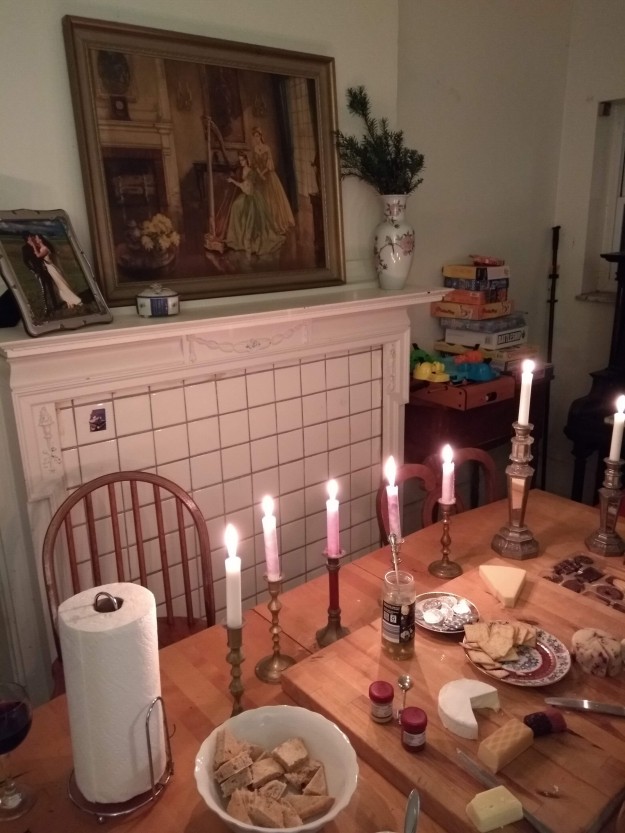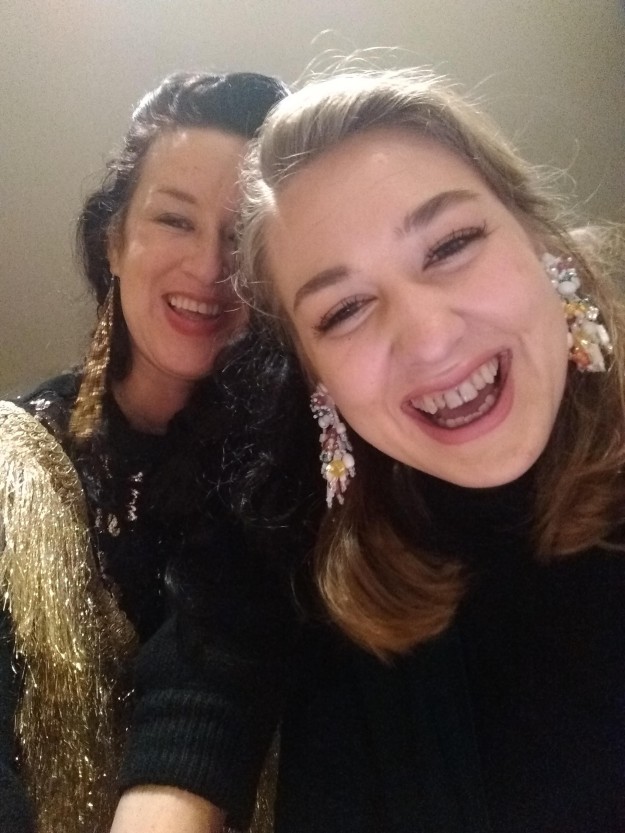by Kate
This is the story of a man named Frank, a man who was generous and gentle and kind and possessed an extraordinary collection of fine ties. This is Frank’s birthday week. Frank’s birthday fell just before St. Patrick’s Day. I always thought this fitting for this man who loved to celebrate life with good food and song and conversation, a man whose blue Polish eyes welled up with tears at the sound of an old ballad. Four years on St. Patrick’s Day I put my tiny baby Olympia in a sling and hauled my harp across the gravel driveway and up the steps into Frank’s home and played a private concert for him as a birthday present. He wasn’t well, had battled heart trouble and cancer and lung problems for years, but he cried at all the ballads and laughed at all my jokes and somehow from his battered leather armchair he made me feel like the much more important artists he had hosted in his early days, when he was a dashing young bachelor managing the Stanley Theater in downtown Pittsburgh, the theater that would later become the Benedum.
Frank and his wife Catherine loved Olympia. They married late in life, well into their 50’s and 60’s.They met when Catherine moved in with her aging mother two doors down from the home Frank had shared with his mother, and somehow Frank the eternal bachelor was finally induced to take the plunge into matrimony. Of course, they had no children of their own. We met Frank and Catherine in a miraculous manner just before Olympia was born. We were living in an apartment above a loud and smoky bar and our baby was due in two and a half months. A chance meeting led us to tour the house they had for rent just behind theirs, with two bedrooms and a washer and dryer and a huge yard with space for a garden and a clothesline. It was a perfect home for newlyweds and a new baby. The new baby was a great source of delight for Frank and Catherine, who were delighted to have the unexpected chance to act as Grandparents after all.
Olympia was a constant presence and joy for Frank in the last year and a half of his life, as his health declined. When he died, I stood with Catherine beside his bed, holding his hand. Olympia slept quietly in the sling while Frank’s wife and I sang Old Man River one more time, told stories, laughed a little and cried a little more as his life slipped away. It was a quiet passing and a peaceful one. A few days later Frank was buried on a high windy hill while a long bagpipe keened a haunting and beautiful lament, but his great generosity has remained a powerful force in our lives.
First of all, there are the ties. The hundreds of designer ties and finely woven, sharply cut collection of dress shirts and suit coats and overcoats too. At six five, my husband couldn’t quite fit into this finery, so at Catherine’s request, the bulk of his collection was delivered to the farmhouse at Sweet Ridge Farm and distributed there to all the men in the family, from my father down to my youngest brother James. These days, weddings, holidays, and formal gatherings of any sort guarantee that Frank’s finery will be sported by one if not all of the Slattery men.
For my family here in Pittsburgh, ties are the tip of the iceberg. Last August, Casey and I bought Frank’s house. For fifty years, Frank lived in a stately yellow brick house high up on a hill, overlooking the hundred year old trees of Arsenal Park and through them the glimmering skyline of downtown Pittsburgh and beyond that Mount Washington, the Incline, and the famous Bayer sign. It’s a beautiful house, but it had been cut up into apartments and after Frank’s devoted (and very business savvy) mother died, it was quite the bachelor pad. Frank lived on the second floor, and his devout and good tempered but untidy hoarder friend occupied the first in a dark, dingy warren full of dusty heaps of books and high unsteady piles of videocassettes, DVDs, and CDs.
Frank always wanted us to have his house. He thought it would be a perfect place to raise a family, something that for one reason or another had never happened in the hundred year history of the house. He loved the idea of Olympia growing up in his home, but when Casey and I stopped in to check the house out we were overwhelmed by the vast size of the place, the filth of the first floor, the pink tiles of the 1950 time capsule kitchen, the amount of money it would take to buy and renovate the house and the amount of work that needed to be done. Once and then twice we looked at Frank’s house, then literally ran down the hill to our safe, solid, 950 square foot apartment and there we stayed, perfectly content until the day suddenly arrived when our cozy little home seemed far too small for a growing family with a legacy of great height and wildly enthusiastic movements. After long months of conversation with Catherine and many requests for aid and counsel sent heavenward to Frank, we took a deep breath and worked out a deal to purchase Frank’s house.
This February in the icy wind and driving snow, exactly four years after moving into the perfect little house behind Frank and Catherine under the same conditions, we moved a block and a half up the street and into a different world. Frank’s house is a strong, sturdy, and stately home. It’s a lifetime kind of home- a place to settle into and live from.

This house is a comfort and a joy, and I can’t express the gratitude I feel for the fact that we were able to move in here.
Both Casey and I believe that Frank was directly involved. I know that he would be glad that we are here- and in fact, Olympia has inherited his room and the antique bed his mother purchased for him long ago.

This is a hundred year old house, but instead of ghosts I believe it is full of the communion of saints. I am daily reminded that our stories continue long after we are gone, that death is not the end of life, and that love lives on beyond the grave.
Happy birthday, Frank. Thanks for giving us a new beginning.










































